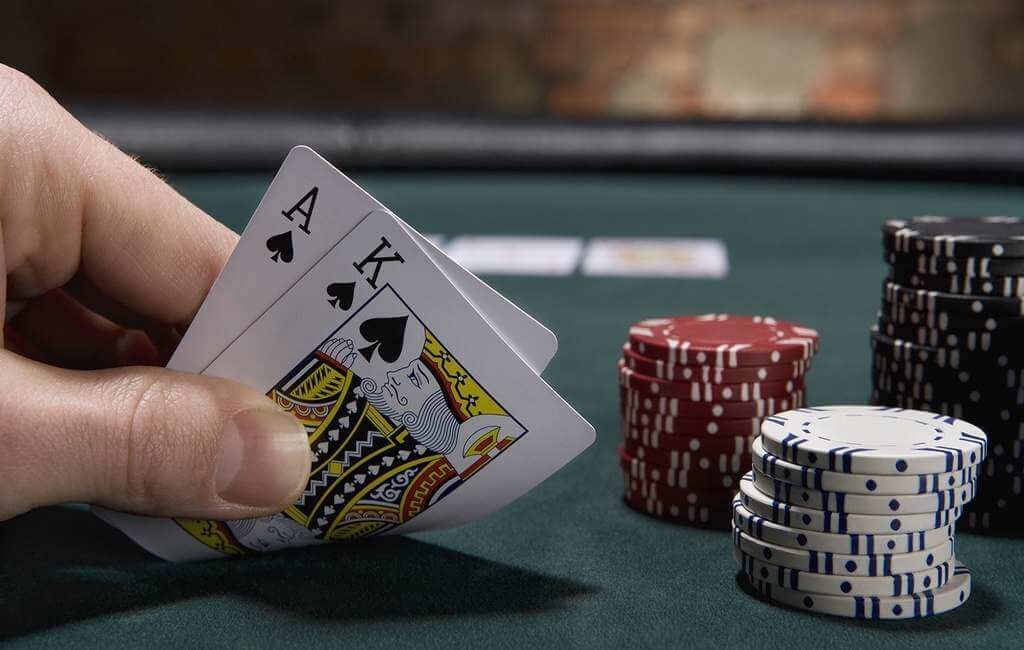
If you want to walk into a casino and have a snowball’s chance in hell at keeping your money out of the house’s hands – other than random, blind luck– then there are only a couple of options.
The first and foremost is sticking to Blackjack and executing perfect basic strategy.
Now, let’s clear the air and state that this doesn’t mean you need to be able to count cards. Although if you can count cards, you could put the house advantage in the negative and tilt it in your favor. That said, without being a math-wiz, you can simply follow situational rules to a ‘t’ and reduce the house edge to around 1%. What this means is, you’ll be able to play all night on one bankroll and have a great time. Perhaps, you’ll end up winning a decent amount of money.
Where to Start
For starters, you’ll want to start your blackjack journey at a low-minimum table. If you can find a $1 or $2 table, you can build your chops without breaking the bank. In that same vein, you can learn to play blackjack on trustworthy sportsbooks like Bovada that offers free tables or low-bet tables.
Secondly, you’ll need to do a little bit of reading on basic strategy. There are plenty of online resources and heck, you can go to your library and check out any of the handful of great blackjack strategy books. We are not going to go fully into the strategy in this article, but we’ll go over a couple of things to get you started so you aren’t a complete dummy when you grab your first strategy book – probably Blackjack for Dummies.
One thing to note: you should start out by focusing on strategy rather than worrying about the number of decks.
Occasionally you can find single-deck and two-deck games. But they are few and far between because they are extremely easy to count cards on. However, while at a casino, you are most likely going to run into 6-deck and 8-deck games. Meaning, they shuffle as many as eight card decks in the shoe to limit your ability to keep track of the cards that have been pulled out. So, if you are not counting cards. It doesn’t really matter how many decks there are. Just focus on understanding the rules and trying to make the right call for each situation.
Master the Art of Surrender
Knowing when to surrender is critical for managing your bankroll and minimizing loss.
There are two types of surrender, early and late. And don’t be put off by the term. It’s actually probably psychologically designed with a negative connotation. Surrendering feels wrong because you’re trying to win. But over the course of the game, learning when to give up some ground is the best course of action, and can be the difference between profiting and losing your hard-earned money.
In a nutshell, it works like this: once you see your two-card hand and the dealers ‘up’ card you can make an educated guess as to your probability of winning the hand. After analyzing the situation, if you feel like your chances are not that great, you can give up and only lose half your bet amount. To do so, simply say the word, ‘surrender’, or drag your pointer-finger across the felt in a line from left to right.
Early surrender is not common in the United States. That said if early surrender is allowed, you can surrender before a dealer sees their hole card – which you might want to do if it is an Ace or 10-value card. Early surrender to an Ace reduces the house probability by .39% and against tens, it’s around .24. So, over the long run, you can minimize your losses by .63 simply by knowing when to hold’em and when to fold ‘em.
Late surrender is when you surrender your hand only after the dealer looks at their hole card – the one facedown. If the dealer has an Ace facing in 4,6,or 8-deck games, you pretty much always want to surrender, except in rare cases that you have spit 7s.
One of the first things you should master in blackjack to be successful is all the situations in which you should surrender. So, we recommend you scour that section of you How to Play Blackjack book!